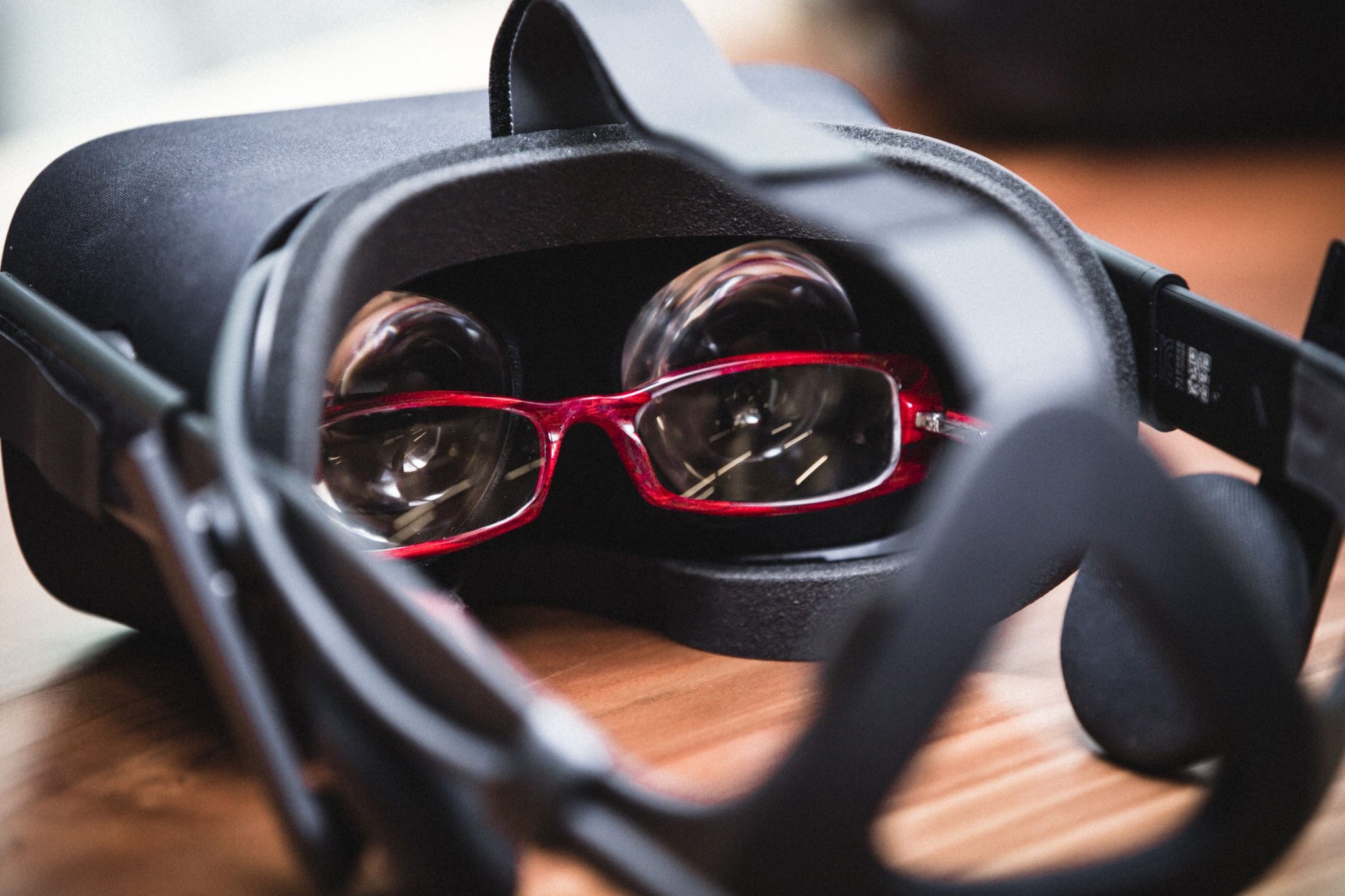
A potential problem for many VR consumers is the fact that headset displays are a fixed distance from the eyes and designed to work best for people with perfect vision.
So what about those with glasses? Clearly, when creating a marketing campaign, game or educational tool, you want to have the greatest possible reach. You also don’t want to unintentionally discriminate against those who might be unable to enjoy the immersive experience due to their less than perfect vision.
The good news is that whether you’re nearsighted, farsighted or blind as a bat, there are a few simple things glasses wearers can do to enjoy the virtual reality experience just as much as anyone else.
1. Keep your glasses on
Hats might have to come off when using a VR headset, but if you have less than perfect vision then your glasses should be left on. Most headsets give users enough space to wear their glasses without any problems.
If you have poor eyesight and try to go glasses-less then you will struggle to see the virtual reality world clearly and that will impact your enjoyment of the experience. If you are a glasses wearer then you should adjust the VR headset to suit your eyes with your glasses on.
If you only wear glasses occasionally to correct a slight astigmatism then you might be able to get away with taking them off and adjusting the focal length and the interpupillary distance of the VR headset to suit. However, not every headset will give you that option.
2.Make sure the headset fits properly
If you’re going to wear a VR headset with your glasses on then take the time to adjust the headset so it fits properly. You want to have a gap between the headset’s screen and your glasses so the headset doesn’t knock your glasses off.
If the headset’s too tight then the pressure of the glasses against the bridge of your nose will be uncomfortable and could give you a headache. If the glasses move even slightly then that can throw off the video’s calibration, making the user feel motion-sick and nauseous. To avoid that, snug but not uncomfortably so is definitely the way to go.
3.Clean your glasses
It goes without saying that if you want to get the most from your virtual reality experience then a pair of clean glasses will help. You’re looking through two sets of lenses so you need to make sure they’re both spotless.
You should also wear glasses that are fitted properly. What we mean is that your glasses should stay put once they’re on your face. If your glasses regularly move around on your nose then that will hinder your experience.
Is there a solution on the horizon?
While virtual reality certainly works for glasses wearers, realistically, simply wearing VR headsets over the top of glasses is a less than perfect solution. However, soon all that could change.
Some VR headsets like the Oculus Rift come with several different sets of interchangeable lenses that attempt to adjust for common levels of nearsightedness. However, EyeNetra, a firm that has created technology to deliver smartphone-based vision tests, plans to go one step further. It has set its sights on creating virtual reality screens that can cater to the specific vision requirements of individual users. However, as yet there’s no word when these screens might hit the market.
Ready to create an eye-catching VR experience?
At Austella, we produce virtual reality games, virtual tours, product demonstrations and trade show attractions that showcase your brand in an immersive and unique way. To find out more, please get in touch with our team.




